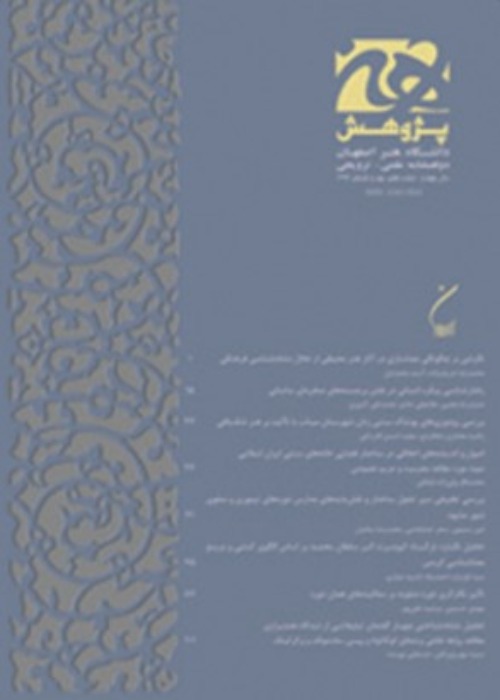Comparative Research on Animal and Human Motifs on Rock Paintings of East of Iran
Author(s):
Abstract:
In this research, we studied cliff painting of South Khorasan (Nehbandan, Birjand, Darmian and Sarbisheh) which contains only a partial of cliff art archeology of this region. Considering the rich cultural and historical background of South Khorasan state and the places containing this art, study gaps are visible in these places. Therefore, existence of these kinds of researches represents the necessity and importance of cliff art archeology position in east of Iran. The purpose of this article is introduction and typology of the patterns of 5 rock paintings (Asu, Ramangan 2, Asadabad Road, Panjeshir Strait and Anjir Valley) in terms of style and technique with important rock paintings and Lakh Mazar indicator in South Khorasan. Therefore, this research is done by descriptive- comparative method and data collection tools are library and field survey. Rock paintings of five indicator regions in South Khorasan state, in terms of method, style and manner are symbolic and meaningful scenes are the artistic motifs in aesthetic case which help having access to the motifs existing in these areas. Research findings indicate that patterns have similarities like engraving with Petroglyph style (knocking). However, about differentiation of patterns we can say: in five studied regions, the painter created the patterns belonging to prehistoric periods in a simplified and sterilized way and collectively, without any designation and by drawing the pattern and created the cliffs with content diversity. However, in Lakh Mazar patterns, painters have drawn the paintings belonging to historical period in a realistic way with more designations and details and have created the shapes beautifully and orderly. The most important thing is that Lakh Mazar paintings are not collective and gregarious and they are usually single portraits. The painters in Lakh Mazar have tried to observe aesthetics by engraving rocks. The important point is that by taking a closer look at the patterns in all 6 areas, we can find out that animal paintings are decreased while human paintings are increased by passage of time. Afterwards, the more we get close to the historical paintings, the less human paintings we can observe and more inscriptions are replaced, which is clearly visible in rock paintings of Birjand Lakh Mazar.
Keywords:
Language:
Persian
Published:
Journal of Pazhuhesh-e Honar, Volume:5 Issue: 10, 2016
Page:
41
magiran.com/p1515088
دانلود و مطالعه متن این مقاله با یکی از روشهای زیر امکان پذیر است:
اشتراک شخصی
با عضویت و پرداخت آنلاین حق اشتراک یکساله به مبلغ 1,390,000ريال میتوانید 70 عنوان مطلب دانلود کنید!
اشتراک سازمانی
به کتابخانه دانشگاه یا محل کار خود پیشنهاد کنید تا اشتراک سازمانی این پایگاه را برای دسترسی نامحدود همه کاربران به متن مطالب تهیه نمایند!
توجه!
- حق عضویت دریافتی صرف حمایت از نشریات عضو و نگهداری، تکمیل و توسعه مگیران میشود.
- پرداخت حق اشتراک و دانلود مقالات اجازه بازنشر آن در سایر رسانههای چاپی و دیجیتال را به کاربر نمیدهد.
In order to view content subscription is required
Personal subscription
Subscribe magiran.com for 70 € euros via PayPal and download 70 articles during a year.
Organization subscription
Please contact us to subscribe your university or library for unlimited access!


